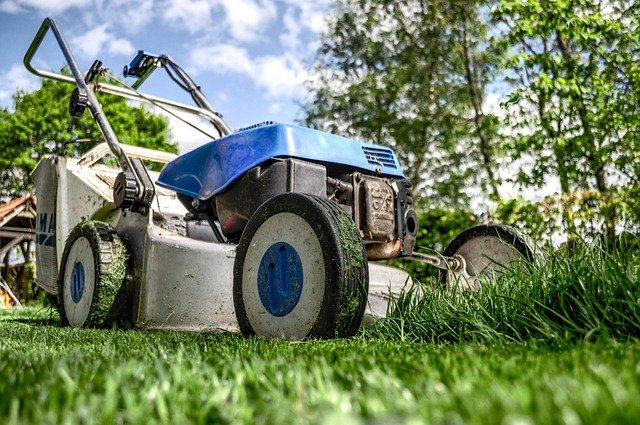Wood Shredder Machines: Essential Tools for Garden Waste Management
Garden maintenance creates substantial organic waste that requires efficient management solutions. Wood shredder machines have become indispensable tools for homeowners and professional gardening services, transforming bulky branches, leaves, and yard debris into manageable mulch. These powerful devices not only streamline waste disposal but also contribute to sustainable gardening practices by converting waste into valuable garden resources.

How Wood Shredder Machines Help Manage Garden Waste
Wood shredder machines revolutionize garden waste management by reducing volume and creating useful byproducts. These devices process branches up to several inches in diameter, leaves, small twigs, and other organic materials into uniform chips or mulch. The volume reduction typically reaches 10:1, meaning ten bags of garden waste become one bag of processed material.
Professional gardening services rely heavily on these machines to handle seasonal cleanup efficiently. During autumn leaf collection or spring pruning, shredders process massive quantities of organic matter quickly. The resulting mulch can be applied directly to garden beds, used for composting, or stored for future landscaping projects. This immediate transformation eliminates the need for multiple trips to disposal sites and reduces labor costs significantly.
The versatility of modern wood shredders extends beyond basic waste processing. Many models handle both wet and dry materials, crushing everything from fresh green clippings to dried branches. This flexibility makes them essential tools for year-round garden maintenance operations.
How To Maintain And Clean A Wood Shredder Machine
Proper maintenance ensures wood shredder machines operate safely and efficiently throughout their service life. Regular cleaning prevents material buildup that can cause jamming and reduce processing effectiveness. After each use, operators should remove all debris from the cutting chamber, inspect blades for damage, and clean air filters.
Blade maintenance represents the most critical aspect of shredder care. Sharp blades process materials efficiently and safely, while dull blades create additional strain on the engine and produce poor-quality mulch. Most manufacturers recommend professional blade sharpening or replacement after 25-50 hours of operation, depending on usage intensity and material types processed.
Engine maintenance follows standard small engine protocols, including regular oil changes, spark plug replacement, and fuel system cleaning. Electric models require less maintenance but still need regular cleaning and blade inspection. Operators should also check all safety features, including guards and emergency stops, before each use to ensure proper operation.
Storage preparation is equally important for longevity. Machines should be thoroughly cleaned, with fuel systems either emptied or treated with stabilizers for gas-powered units. Covering stored equipment protects against moisture and debris accumulation during inactive periods.
Eco Friendly Benefits Of Using A Wood Shredder
Wood shredders provide substantial environmental benefits by diverting organic waste from landfills and creating valuable garden resources. Municipal waste facilities receive millions of tons of yard waste annually, much of which could be processed locally into useful mulch and compost materials. By processing waste on-site, property owners reduce transportation emissions and landfill burden.
The mulch produced by wood shredders improves soil health naturally. Applied around plants, shredded organic matter retains moisture, suppresses weeds, and gradually decomposes to enrich soil structure. This natural soil improvement reduces the need for synthetic fertilizers and chemical weed control products, supporting healthier garden ecosystems.
Shredded materials also accelerate composting processes by increasing surface area for microbial activity. Properly sized organic matter composts more evenly and quickly than whole branches and leaves. This rapid decomposition creates nutrient-rich soil amendments that support plant growth while completing natural recycling cycles.
Carbon sequestration represents another significant environmental benefit. Rather than releasing carbon through landfill decomposition or burning, shredded organic matter slowly releases carbon into garden soils where it supports plant growth and soil structure improvement.
| Machine Type | Provider | Power Source | Processing Capacity | Cost Estimation |
|---|---|---|---|---|
| Electric Shredder | Sun Joe | 15-Amp Electric | 1.5” branches | $150-$250 |
| Gas Chipper/Shredder | Troy-Bilt | 159cc 4-Cycle | 3” branches | $800-$1,200 |
| Heavy-Duty Chipper | Patriot Products | 14HP Gas | 4” branches | $2,500-$3,500 |
| Professional Unit | Vermeer | Diesel Engine | 12” capacity | $15,000-$25,000 |
Prices, rates, or cost estimates mentioned in this article are based on the latest available information but may change over time. Independent research is advised before making financial decisions.
Wood shredder machines serve as cornerstone equipment for effective garden waste management, offering practical solutions for debris processing while supporting environmental sustainability. Their ability to transform waste into valuable garden resources makes them essential tools for both homeowners and professional gardening services. Through proper maintenance and responsible use, these machines contribute to healthier gardens and reduced environmental impact while streamlining essential yard care tasks.




